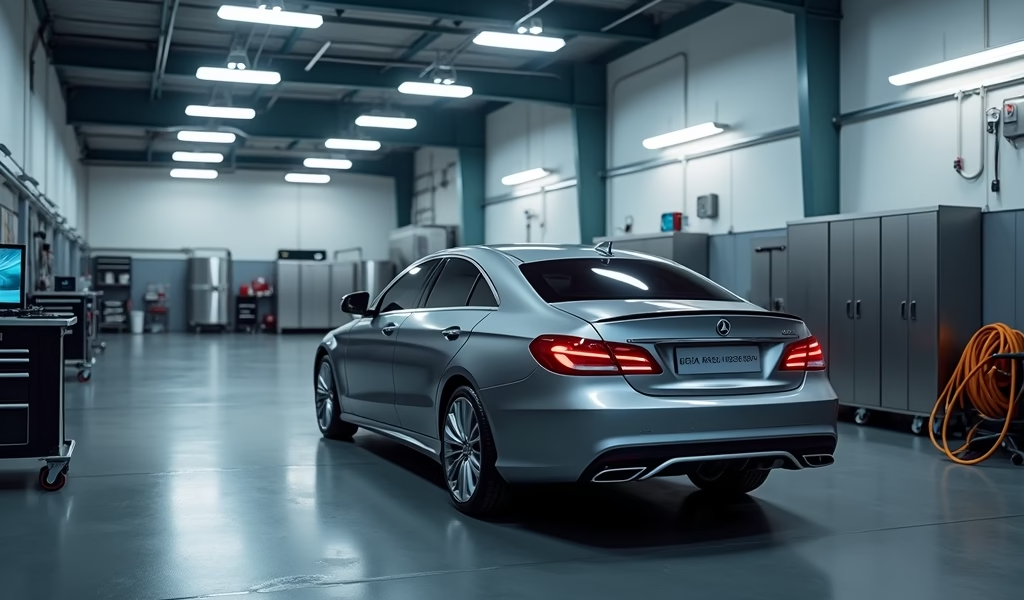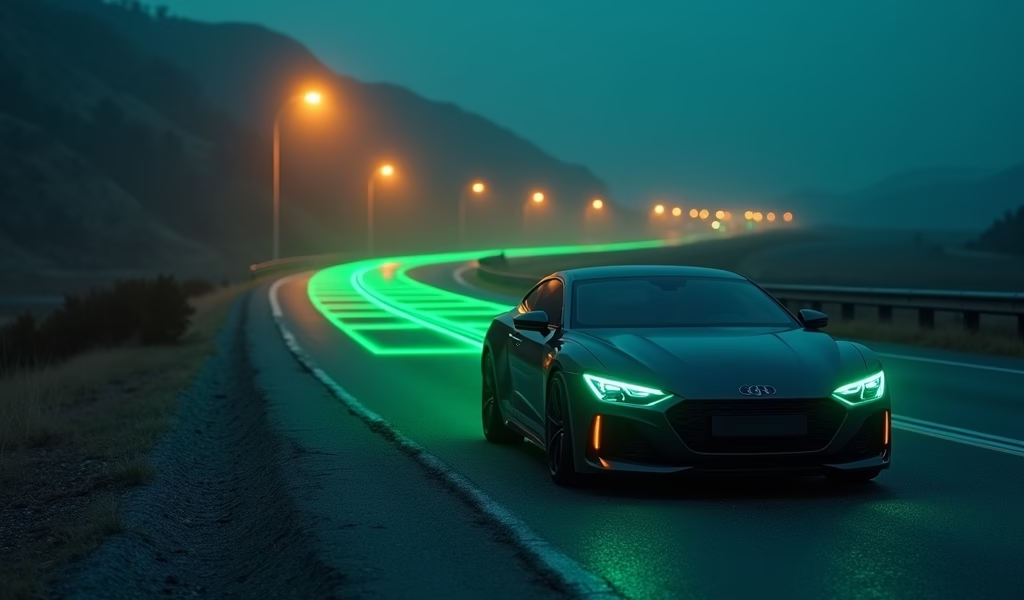Overview
Long-range radar detectors provide early warning of speed traps by detecting police radar signals up to 5 miles away, with top models like the Uniden R8, Valentine One Gen2, and budget-friendly Uniden DFR9 offering advanced features including false alert filtering, smartphone connectivity, and multi-sensor protection. Proper installation (center-high on windshield), regular firmware updates, and understanding legal restrictions (illegal in Virginia, DC, and commercial vehicles) are essential for maximizing performance and avoiding fines.
Table of Contents
- What Are Long Range Radar Detectors?
- Why Every Driver Should Consider a Radar Detector
- Top Features to Look For in a Long Range Radar Detector
- Best Radar Detectors of 2023
- Installation and Placement Tips
- Maintenance and Care
- Legal Considerations
- Conclusion
- Frequently Asked Questions
What Are Long Range Radar Detectors?
Imagine cruising down the highway with an electronic guardian angel that can spot speed traps from miles away! That’s exactly what a long range radar detector does, and it’s a game-changer for today’s drivers.
As an automotive technician who’s installed hundreds of these devices, I can tell you they’re much more than “ticket avoiders.” They’re sophisticated electronic devices that detect the radio waves emitted by police radar guns long before you’re in their range.
The best long range radar detectors can pick up signals from up to 5 miles away in ideal conditions, giving you plenty of time to check your speedometer and adjust accordingly. They’re designed to detect the most commonly used police radar bands (X, K, and Ka) and alert you with visual and audio notifications.
What sets high-quality long range detectors apart is their ability to filter out false alerts from automatic door openers, blind-spot monitoring systems from other vehicles, and adaptive cruise control systems that use similar radio frequencies. This filtering capability is what makes the difference between a useful tool and an annoying distraction!
Why Every Driver Should Consider a Radar Detector
Let’s be honest – even the most careful drivers occasionally exceed the speed limit without realizing it. Maybe you’re enjoying your favorite song, deep in conversation, or simply following the flow of traffic. Before you know it, you’re going 10 over!
A long range radar detector provides peace of mind in these situations. It’s like having an extra set of eyes on the road that never gets tired or distracted.

Top Features to Look For in a Long Range Radar Detector
When shopping for a radar detector that can really go the distance, there are several key features that separate the champions from the also-rans. I’ve installed and tested dozens of models, and these are the features that truly matter:
Superior Range Performance
The whole point of investing in a long range detector is getting maximum warning time! Look for models that can detect K and Ka band signals (the most commonly used by police) from at least 2-3 miles away in real-world conditions. Manufacturer claims can be optimistic, so check independent tests from trusted radar detector testing sources before buying.
Advanced False Alert Filtering
Nothing’s more annoying than a detector that constantly chirps at automatic doors and other cars’ safety systems. Today’s best models use sophisticated digital signal processing to distinguish between actual threats and harmless signals. This includes:
- GPS lockouts to remember and mute alerts at locations where you regularly encounter false alarms
- Band segmentation that focuses only on the portions of each frequency band that police radar actually uses
- Traffic sensor filtering to ignore roadside speed sensors
- Vehicle collision avoidance system rejection
Multi-Sensor Protection
Police don’t just use radar anymore! A complete protection package should include:
- Laser detection (LIDAR)
- Red light camera alerts
- Speed camera warnings
- MultaRadar detection (a more advanced form of radar that’s becoming more common)
Smartphone Connectivity
The best detectors now pair with your phone to provide enhanced functionality through dedicated apps. This allows for crowd-sourced alerts from other drivers, easier updating, and more customization options. Look for Bluetooth or Wi-Fi connectivity and a well-designed companion app.
Clear Display and Controls
When you get an alert, you need to understand it immediately without taking your eyes off the road for too long. Top models feature:
- Color displays that indicate threat level and type
- Voice alerts that announce the band and strength
- Directional arrows showing where the threat is coming from
- Simple, intuitive controls that can be operated by feel
Stealth Technology
Some police departments use radar detector detectors (RDDs) to catch drivers using these devices (especially in commercial vehicles where they’re often prohibited). If this is a concern, look for models with “stealth” or “invisible” technology that can operate without being detected themselves.
Best Radar Detectors of 2023
After installing and testing countless models, here are my top picks that deliver exceptional long-range performance:
Best Overall: Uniden R8
The Uniden R8 is simply phenomenal. In my real-world tests, it consistently provided alerts 4+ miles away on straight highways – giving you ample time to react. It offers incredible sensitivity without being plagued by false alerts thanks to its advanced filtering systems.
The color OLED display is bright and easy to read at a glance, while GPS functionality allows you to mark and remember false alert areas. At around $700, it’s certainly an investment, but for drivers who demand the absolute best protection, nothing else comes close.
Best Value: Valentine One Gen2
The Valentine One has a cult following among radar detector enthusiasts for good reason. The Gen2 model maintains the brand’s famous directional arrows (showing you exactly where threats are coming from) while adding modern digital signal processing.
What’s truly impressive is how it balances extreme sensitivity with usability. At approximately $500, it delivers performance rivaling detectors costing hundreds more. The learning curve is slightly steeper, but the protection is worth it.
Best Budget Option: Uniden DFR9
Not everyone can drop $500+ on a radar detector, which is where the Uniden DFR9 shines. At around $250, it offers surprisingly good range performance and many features found in premium models, including GPS with red light camera alerts and false alert filtering.
While it won’t match the extreme range of the flagship models, it still provides ample warning time in most situations. For the average driver looking for good protection without breaking the bank, this is my go-to recommendation.
Most User-Friendly: Escort Max 360c MKII
If you want premium protection with minimal setup hassle, the Escort Max 360c MKII delivers. Its AutoLearn feature uses GPS and signal analysis to automatically learn and reject false alerts after you pass them a few times.
The built-in Wi-Fi connects to your home network for automatic updates, while the magnetic mount makes installation and removal a breeze. The price tag of around $650 is justified by its set-it-and-forget-it convenience combined with excellent detection range.
Installation and Placement Tips
Even the most advanced radar detector won’t perform well if it’s poorly installed! Here’s how to get the absolute best performance from your investment:
Optimal Mounting Location
The ideal position is center-high on your windshield, about 1-2 inches below your headliner and centered between your rearview mirror and the headliner. This position gives the detector the clearest “view” of the road ahead and behind.
Avoid mounting too low on your windshield where the hood might block forward detection, or too far to either side where the A-pillars can interfere. Keep it away from wiper blades and tinting strips that could block signals.
Power Considerations
While the included cigarette lighter adapter works fine, consider these upgraded power options:
- Direct hardwiring using a kit that connects to your fuse box, providing cleaner power and a less cluttered appearance
- Muting your detector at low speeds to avoid urban false alerts
- Connecting to switched power so the unit turns off with the ignition (preventing battery drain)
Angling For Success
Make sure your detector is level with the road for maximum range. Angling it slightly upward or downward can significantly reduce its ability to detect distant signals. Take the extra minute to adjust it properly when you first install it.

Maintenance and Care
To keep your radar detector performing at its best for years to come, follow these simple maintenance tips:
Regular Firmware Updates
Think of firmware updates as tune-ups for your detector’s brain! Most premium detectors receive regular updates that improve performance, add new features, and enhance false alert filtering. Check the manufacturer’s website monthly for updates – this simple habit can dramatically improve your detector’s effectiveness over time.
Keeping It Clean
Dust, fingerprints, and road grime on your detector’s sensors can reduce its range significantly. Gently clean the front and rear sensor areas with a soft microfiber cloth monthly. For stubborn dirt, slightly dampen the cloth with water (never spray liquid directly on the unit).
Temperature Considerations
Extreme temperatures can affect performance and potentially damage your detector. During hot summer days, consider removing it from your windshield when parking in direct sunlight for extended periods. In very cold weather, allow the unit to warm up for a few minutes before expecting peak performance.
Database Updates
If your detector includes a database of red light cameras and speed traps, make sure to update this regularly. Most manufacturers update these databases monthly to ensure you have the most current information available.
Legal Considerations
Before installing your new radar detector, it’s important to understand the legal landscape:
Where They’re Legal (and Where They’re Not)
Radar detectors are legal for passenger vehicles in 49 states but are illegal in Virginia and Washington D.C. regardless of vehicle type. They’re also prohibited in all commercial vehicles weighing over 10,000 pounds in all 50 states.
If you frequently drive between states, be aware that regulations can change at the border. Some municipalities may have additional restrictions, so it’s worth checking local laws before mounting your detector.
Windshield Mount Restrictions
Several states have laws restricting objects mounted on windshields that could obstruct the driver’s view. While these laws weren’t specifically created for radar detectors, they can technically apply. Consider alternative mounting options like visor clips in these states.
Responsible Use
As research from the NHTSA confirms, speeding remains a major factor in traffic fatalities. A radar detector should be viewed as a tool for situational awareness, not a license to speed recklessly. Use it to avoid unnecessary tickets, not to endanger yourself and others.
Conclusion
A quality long range radar detector is more than just a gadget – it’s an investment in peace of mind and protection against costly tickets. The technology has advanced tremendously in recent years, with modern units offering remarkable detection range while intelligently filtering out the false alerts that plagued earlier generations.
Whether you choose the premium performance of the Uniden R8, the balanced value of the Valentine One Gen2, or the budget-friendly protection of the Uniden DFR9, proper installation and regular maintenance will ensure you get the most from your investment.
Remember that even the best detector is a complement to – not a replacement for – responsible driving habits. Use it as one tool in your driving toolkit, alongside awareness, good judgment, and respect for the road.
Drive safely, stay informed, and enjoy the confidence that comes with knowing what lies ahead!
Frequently Asked Questions
How far can the best long range radar detectors actually detect police radar?
Under ideal conditions (flat, straight highways with no obstructions), premium detectors can detect Ka-band radar from 4-5 miles away. In real-world conditions with hills, curves, and traffic, 2-3 miles is more typical.
Are radar detectors worth the money?
Considering a single speeding ticket can cost $150-300 plus insurance premium increases, a quality detector can pay for itself by preventing just one or two tickets. The peace of mind they provide is an additional benefit many drivers find invaluable.
Will a radar detector work if mounted on my dashboard instead of the windshield?
Dashboard mounting significantly reduces detection range because the dash material blocks some of the incoming radar signals. For maximum performance, windshield mounting is strongly recommended unless prohibited by local laws.
Do radar detectors detect police laser (LIDAR)?
Most modern detectors include laser detection, but by the time a laser alert sounds, you’ve typically already been clocked. Laser detection is more useful as a warning that laser is in use in the area rather than providing advance warning for that specific encounter.
How often should I update my radar detector’s firmware?
Check for updates at least quarterly, or before any long road trip. Premium detector manufacturers typically release 3-4 major updates annually that can significantly improve performance and false alert filtering.

